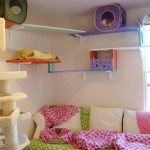How to Decorate a Screened-In Patio
A screened-in patio offers a unique opportunity to extend living space into the outdoors while providing protection from insects and the elements. Decorating this space effectively requires careful consideration of comfort, functionality, and aesthetics. The goal is to create an inviting and versatile area that can be enjoyed throughout various seasons.
The initial step in decorating a screened-in patio involves assessing the existing structure and its limitations. Factors such as size, shape, lighting, and existing architectural features will influence design choices. Consideration should be given to the patio's intended use, whether it's primarily for dining, relaxation, entertaining, or a combination of these.
Choosing the Right Furniture
Furniture selection is paramount in decorating a screened-in patio. Durability, comfort, and style are all key considerations. Given the semi-outdoor environment, furniture should be resistant to moisture, fading, and pests. Materials like wicker, teak, aluminum, and synthetic resin are well-suited for screened-in patios due to their weather-resistant properties.
Wicker furniture offers a classic and versatile look, blending well with various design styles. Natural wicker requires more maintenance, but synthetic wicker provides excellent durability and resistance to the elements. Teak furniture is known for its strength and natural beauty, developing a unique patina over time. Aluminum furniture is lightweight, rust-resistant, and easy to clean, making it a practical choice. Synthetic resin furniture is often made to mimic the look of natural materials while offering superior durability and low maintenance.
Comfort is crucial for ensuring that the patio is a welcoming space. Cushions and pillows should be made from weather-resistant fabrics such as Sunbrella or Olefin. These fabrics are designed to withstand exposure to sunlight and moisture, preventing fading and mildew growth. Opt for thick, supportive cushions that provide ample comfort for extended periods of relaxation. Consider adding throw pillows in various colors and patterns to enhance the visual appeal and provide additional back support.
The size and layout of the furniture should be proportional to the patio's dimensions. Avoid overcrowding the space, as this can make it feel cramped and uncomfortable. For smaller patios, consider using space-saving furniture such as folding chairs or nesting tables. Modular furniture can also be a good option, as it can be easily rearranged to accommodate different needs. For larger patios, consider creating distinct zones for dining, lounging, and conversation. This can be achieved by using different types of furniture and rugs to define each area.
Dining sets typically include a table and chairs, suitable for enjoying meals outdoors. Consider the size of the table based on the number of people you typically entertain. Lounge furniture may include sofas, loveseats, armchairs, and ottomans, providing comfortable seating for relaxation and conversation. Coffee tables and side tables can provide convenient surfaces for drinks, snacks, and books. Consider adding a rocking chair or hammock for a touch of relaxation and whimsy.
Ambient Lighting and Atmosphere
Lighting plays a significant role in creating the desired ambiance in a screened-in patio. Careful planning of lighting can transform the space from a functional area during the day to a cozy and inviting retreat in the evening. A combination of ambient, task, and accent lighting can achieve the desired effect.
Ambient lighting provides overall illumination for the patio. String lights, lanterns, and pendant lights are popular choices for creating a warm and inviting atmosphere. String lights can be strung along the perimeter of the patio or draped across the ceiling, providing a soft and diffused glow. Lanterns can be placed on tables or hung from hooks, adding a touch of charm and elegance. Pendant lights can be suspended from the ceiling, providing a more focused source of light.
Task lighting provides focused illumination for specific activities such as reading or dining. Table lamps and floor lamps can be used to provide adequate lighting for these tasks. Choose lamps with adjustable brightness settings to customize the lighting to your preferences. Consider using LED bulbs, which are energy-efficient and long-lasting.
Accent lighting highlights specific features of the patio, such as plants, artwork, or architectural details. Spotlights and uplights can be used to create dramatic effects and add visual interest. Path lights can be used to illuminate walkways and create a welcoming entrance. Consider using solar-powered lights, which are easy to install and require no wiring.
Consider the color temperature of the light bulbs when selecting lighting fixtures. Warm white light (2700-3000K) creates a cozy and inviting atmosphere, while cool white light (4000-5000K) provides a brighter and more energizing feel. Dimmers can be installed to adjust the brightness of the lights, allowing you to create the perfect ambiance for any occasion.
In addition to artificial lighting, natural light should also be considered. Maximize the amount of natural light that enters the patio by keeping the screens clean and free of obstructions. Light-colored walls and furniture can also help to reflect light and brighten the space. Consider adding sheer curtains or blinds to filter the sunlight and provide privacy.
Adding Plants and Greenery
Incorporating plants and greenery into a screened-in patio design can enhance its beauty and create a more relaxing and inviting atmosphere. Plants add color, texture, and life to the space, blurring the lines between indoors and outdoors. Consider the climate and lighting conditions when selecting plants for the patio. It is crucial to choose plants that thrive in the specific environment of the screened-in patio.
Potted plants are a versatile and convenient way to add greenery to a screened-in patio. Choose pots that complement the overall design aesthetic and are appropriate for the size and type of plant. Consider using a variety of pot sizes and shapes to create visual interest. Group plants together to create a more cohesive look. Select plants with different textures and colors to add depth and dimension to the space.
Hanging baskets are an excellent way to add vertical interest to a screened-in patio. They can be hung from the ceiling, walls, or railings, creating a lush and cascading effect. Choose trailing plants such as ivy, petunias, or ferns to create a dramatic display. Ensure that the hanging baskets are securely mounted and that the plants receive adequate watering.
Climbing plants can be trained to grow up trellises or walls, adding privacy and creating a green wall effect. Vines such as clematis, honeysuckle, or jasmine are popular choices for screened-in patios. Provide a sturdy support structure for the vines to climb on and prune them regularly to maintain their shape and size.
Consider incorporating herbs and vegetables into the patio design. A small herb garden can provide fresh ingredients for cooking, while a container vegetable garden can provide a source of fresh produce. Choose herbs and vegetables that are well-suited to container gardening and provide them with adequate sunlight and water.
Pay attention to the watering needs of the plants. Screened-in patios can be drier than open outdoor spaces, so it is important to water the plants regularly. Consider using self-watering pots or installing an irrigation system to simplify the watering process. Fertilize the plants regularly to promote healthy growth. Prune and deadhead the plants as needed to maintain their appearance and encourage new growth.
Consider incorporating mosquito-repelling plants such as citronella, lavender, or marigolds into the patio design. These plants can help to deter mosquitoes and other insects, making the space more enjoyable to use. Place the plants strategically around the perimeter of the patio to create a natural barrier against pests.
Selecting the right plants requires an understanding of the specific climate and light conditions of the patio. For instance, a north-facing patio might be better suited for shade-loving plants, while a south-facing patio might accommodate plants that thrive in direct sunlight.
Ultimately, a well-decorated screened-in patio is an extension of the home that provides a comfortable and inviting space for relaxation and entertainment. By carefully considering furniture, lighting, and plants, it is possible to create a sanctuary that enhances the enjoyment of the outdoors.

Cozy And Inviting Screened In Porch Decorating Ideas Worthing Court

Summer Screened Porch Decor Less Than Perfect Life Of Bliss

How To Decorate A Screened In Porch For Fall Entertaining

Cottage Style Screened In Porch Decorating Ideas Worthing Court Diy Home Decor Made Easy
:max_bytes(150000):strip_icc()/thespruce-screenporch-whitneymcgregor1-13f9a3bb8e0540e78a98da575f7a1700.jpg?strip=all)
32 Small Screened In Porch Ideas To Maximize Your Space

Screened In Porch Ideas 13 Beautiful Decorating Tips Jenna Kate At Home

30 Best Screened In Porch Ideas 2025
:max_bytes(150000):strip_icc()/Snapinsta.app_178937962_823146148552728_2341508118307631374_n_1080-efc46e7682e84af8b4de15fe5f5f0b60.jpg?strip=all)
32 Small Screened In Porch Ideas To Maximize Your Space

Cozy And Inviting Screened In Porch Decorating Ideas Worthing Court

Southern Screen Porch Decorating Ideas Chica And Jo







